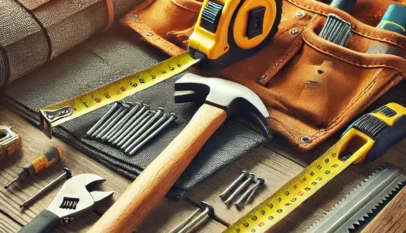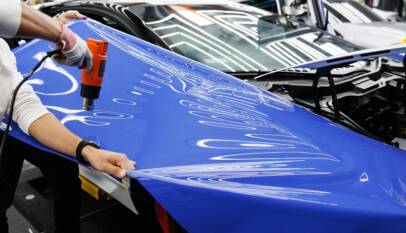Roofing Tools and Accessories: Essential Gear for Every Roofing Project
Choosing the right roofing tools and accessories can significantly impact both the efficiency and quality of any roofing project. Quality tools not only ensure a safer working environment but also lead to a more durable and aesthetically pleasing roof. By understanding the essential tools and accessories available, anyone can improve their building methods and achieve better results.
From basic hand tools such as hammers and nail guns to specialized equipment like roof bins and safety harnesses, each item plays a crucial role. The right accessories, including underlayment and flashing, also contribute to the longevity of the roof. Knowing which tools to invest in can save time and reduce costs for both professionals and DIY enthusiasts alike.
Exploring the different roofing tools and accessories available will provide valuable insights into their uses and benefits. This knowledge enables readers to make informed decisions when planning their roofing projects, ensuring efficiency and effectiveness in their work.
Essential Roofing Tools
Roofing projects require specific tools that enhance efficiency and safety. The following sections detail essential tools used in roofing tasks, each playing a vital role in building or repairing roofs.
Hammers and Nail Guns
Hammers are fundamental tools for any roofing job. The most common type is a roofing hammer, which includes a flat striking surface and a built-in claw for removing nails.
Nail guns are increasingly favored for their speed and efficiency. These tools dramatically reduce the time needed to secure shingles. They are designed to drive nails at various lengths suitable for different materials.
It’s crucial to select the right type of nail for the gun used, ensuring a secure hold. Many professionals prefer pneumatic or battery-powered nail guns for their reliability and consistent performance.
Utility Knives and Blades
Utility knives are versatile and indispensable in the roofing trade. They are primarily used for cutting roofing materials, such as shingles or underlayment. Heavy-duty versions are designed for durability and ease of use.
Blades should be sharp and replaceable to maintain cutting efficiency. Using a dull blade can increase the risk of accidents. A variety of blades are available, including hook blades for cutting through tougher materials.
The ergonomic design of utility knives allows for better control and precision during cuts. This ensures cleaner edges and smoother applications, which is critical for proper installation.
Roofing Shovels and Tear-Off Tools
Roofing shovels are essential for removing old roofing materials. These tools typically have a wide, flat blade that can scoop under shingles or tiles.
Tear-off tools aid in the disposal of old roofing surfaces. Many professionals opt for specialized roofing tear-off shovels that maximize efficiency when working on steep roofs.
When selecting these tools, consider the weight and grip for better maneuverability and control. A sturdy, well-designed shovel can significantly reduce effort and time during tear-off tasks.
Seaming and Soldering Tools
Seaming tools are necessary for installing and sealing roofing materials, especially in flat roofing systems. These tools ensure that seams are watertight, which is crucial for preventing leaks.
Soldering tools are often used in metal roofing applications. A quality soldering iron can create strong, durable seams between metal panels. This process requires precision to ensure proper bonding.
Additional tools, such as seam rollers, can assist in pressing down seams for better adhesion. Choosing the right tools enhances the integrity and longevity of the roof being installed or repaired.
Roofing Accessories and Safety Equipment
Proper roofing accessories and safety equipment are essential for ensuring a secure and efficient work environment. This section discusses critical items that support roof installation and maintenance while prioritizing safety.
Ladders and Scaffolding
Ladders and scaffolding are vital for accessing roofs safely. Extension ladders should be chosen based on the height of the building and must extend at least 3 feet above the roof edge for safe access. Fiberglass ladders are preferred for roofing projects due to their lightweight nature and electric resistance.
Scaffolding systems provide a stable platform for workers and materials. They should be assembled on a level surface and equipped with guardrails. When using scaffolding, it is crucial to adhere to manufacturer guidelines for weight limits and safety features.
Roofing Harnesses and Fall Protection
Roofing harnesses and fall protection systems are critical for worker safety. A full-body harness distributes fall forces across the body and minimizes injury risks. Workers should inspect harnesses for wear and damage before each use.
Fall protection systems, such as anchor points and safety lines, help secure workers to the structure. It’s essential to select anchors rated for the specific load requirements and to follow local safety regulations. Using these systems significantly reduces the risk of falls on steep or elevated roofs.
Work Gloves and Goggles
Work gloves and goggles are necessary for protecting hands and eyes during roofing tasks. Cut-resistant gloves can prevent injuries from sharp materials like shingles and nails. They should fit snugly, allowing for dexterity while providing necessary protection.
Safety goggles protect eyes from dust, debris, and harmful UV rays during installation. Goggles with anti-fog features are beneficial for maintaining visibility. Workers should ensure their protective gear is rated for construction use and meets safety standards.
Roofing Shoes and Knee Pads
Roofing shoes and knee pads enhance comfort and safety on the job. Non-slip roofing shoes provide traction on wet or steep surfaces, reducing the risk of falls. Shoes made from waterproof materials are also advantageous, keeping feet dry during adverse weather conditions.
Knee pads protect workers’ knees while kneeling on hard surfaces. Look for pads with thick, durable padding and adjustable straps for a secure fit. Using knee pads can help prevent strain and injury, increasing overall productivity during roofing tasks.
Vaishno Devi Helicopter Booking: Your Complete Guide for a Hassle-Free Pilgrimage
Visiting Vaishno Devi is a spiritual journey that attracts millions of pilgrims each year.…













